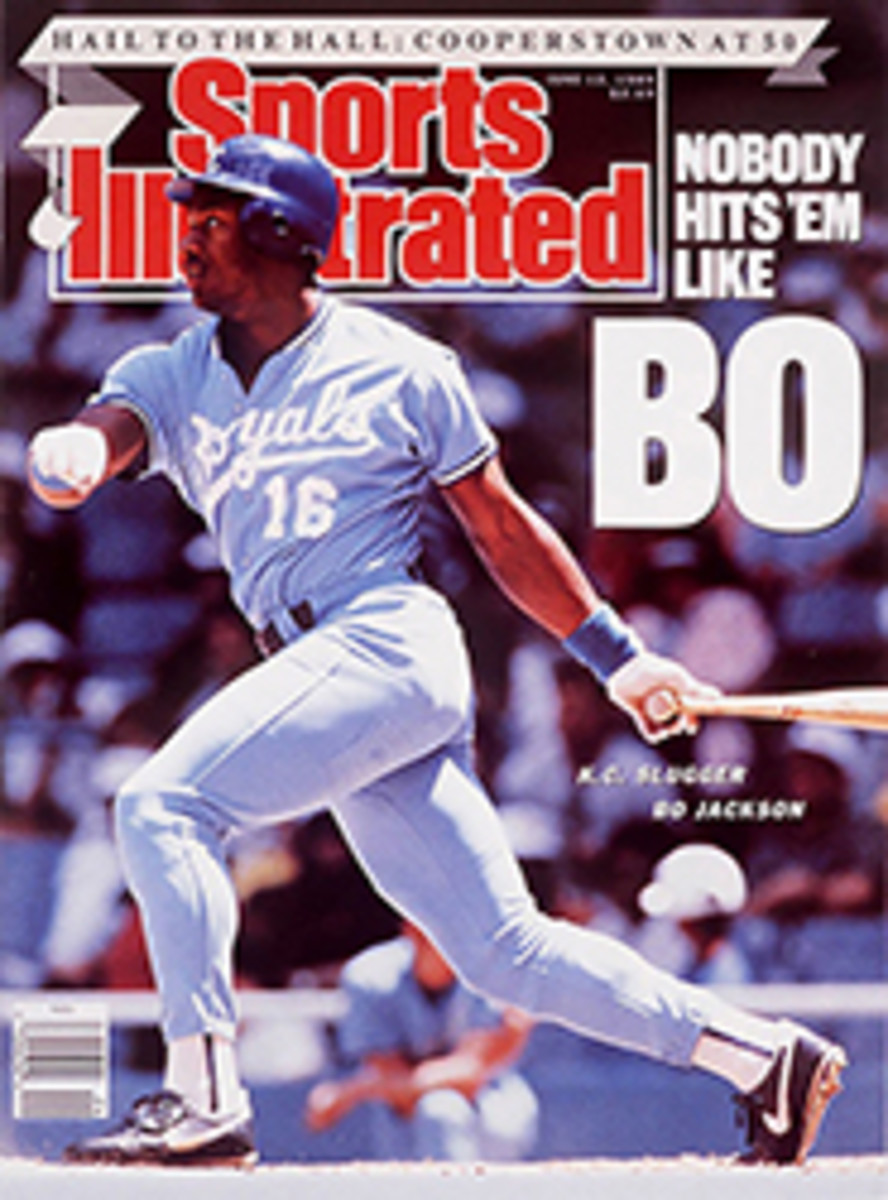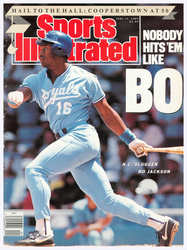
America's Teen
It is gray and cold in Howard County, Md., this Memorial Day weekend. The first game of the Columbia Invitational Soccer Tournament was called on account of lightning, and during the second game rain squalls have been sweeping the length of the sodden field. It's no day for classy soccer, and when the big-shouldered 16-year-old in the number 9 jersey receives a bouncing pass out on the right, in the offensive zone, you expect nothing more from him than a hopeful kick lofted toward the opposing goalmouth.
Instead, he deadens the ball, barely looking at it, because he needs to watch the shifting pattern of players around him. Then he starts to move on the goal. From the sidelines come the yells of the soccer illiterates: Get rid of it! No crude booting for number 9, Todd Haskins, though. He keeps cutting in, and now there is only the goalie to beat.
Todd pauses for a second, almost arrogantly, to compute the trajectory of his shot. When it comes, it is a lazy lob from the side of the foot, but the ball curls just out of reach of the keeper and into the goal. Even before the ball bulges the back of the net, Todd is running back to midfield with his arms high in triumph.
Todd Haskins, a 5'8", 150-pound junior at Howard High School in Columbia, is the star goal-scorer of the local club team, Howard Courage. But next week he will exchange the red jersey of Howard Courage for the red, white and blue of the U.S. under-16 national soccer team as it heads for Scotland and the world championships. The Americans qualified for their age-group finals last fall, and they enter the world championships as one of the best soccer teams, at its level, this country has ever produced. American kids like Todd are now as good technically as any in the world.
At 16, Haskins is a seasoned player who can control a game both as a goal-scorer and as a defender, the role he plays on the national team. (Like race horses, soccer kids have an official birthday; those born on or after Aug. 1, 1972, are officially under 16.) "You wouldn't believe how scrawny he was as a 13-year-old," says Keith Tabatznik, who coached Todd when he played on the Maryland state team for children under 14. "He was just too fragile physically to handle a defensive role. But he could do so many things with the ball that I just had to use him. So I played him out on the wing. I even jumped a year with him, put him in with the 14's."
Todd has always been ahead of his time. "When he was little, I used to walk him by Thunder Hill Elementary School while the kids were practicing," says his mother, Alice Haskins, who is the principal of Patapsco Middle School in Ellicott City, Md., "and Todd used to kick the ball around on his own on the sidelines. The coach started watching him, then asked me how old he was. I told him Todd was five. 'How soon is he going to be six?' he wanted to know."
Todd joined the youth team the next year and since then has followed an unimpeded route to the top of American soccer. "Coaches came round all the time," recalls Alice. "He played for the state, then for the region. And finally, the letter came to say he'd been picked for his country. They never call. It's always a letter. And they always send it to the kid. I was ecstatic."
That was early last year, after Roy Rees, the national under-16 coach, had conducted a tryout camp for the team in January. "I was looking for composed, confident players," says Rees, "and Todd was that. He tries to act laid-back, but he is a very intense, serious young man. He has the sort of pride I was looking for. And a passion for the game."
Todd began his career as an international player a year ago, when the U.S. twice beat Canada during exhibition games in Colorado by a combined score of 8-2. His true blooding in world competition, however, came last November at the regional tournament in Trinidad that determined which North and Central American and Caribbean countries would qualify for the finals in Scotland.
The U.S. made a spectacular start, winning its first three games, against St. Lucia and strong teams from Guatemala and Honduras, by a cumulative score of 19 goals to one. Then, undermined by the flu and homesickness and playing Trinidad in front of a capacity crowd of 24,000 in Port of Spain, the U.S. lost 1-0. After that, morale seemed to go to pieces. Three days later, against the same Canadian team that it had beaten so easily in the summer, the U.S. lost 2-1. Suddenly, that trip to Scotland looked highly unlikely.
"It was basically a boredom thing," says Tabatznik, now the national team administrator, trying to explain the lapse in form. "Our kids, suburban kids, have so much more to do at home than some of the lads they're playing. They get homesick fast. Their attention span is limited." Todd was no exception. During the two weeks in Trinidad, Tabatznik recalls, "he wanted to go out and eat, rap with the girls. Hell, you can understand it. He was 16. He has a car of his own at home. And there he was in a guest house, sharing a room with three other kids and having nothing to do."
Tabatznik and his colleagues solved the problem the American way. The team moved into more comfortable quarters at the Hilton in Port of Spain, where the boys enjoyed a big Thanksgiving dinner. They went on to beat Cuba 1-0, then two days later took Trinidad in the return game, 1-0. The trip to Scotland became a reality.
The Trinidad tournament confirmed that U.S teenagers can now excel against international soccer competition. But that lapse in morale was worrisome. It reflected the large differences in background between American team members and many of their counterparts. The Dutch pick up their best young soccer players kicking cans around the Rotterdam waterfront. Brazil breeds hers in the tin-roofed favelas of S‚Äö√†√∂¬¨¬£o Paulo. But in the U.S. they emerge in $80 training shoes from $250,000 houses with boats in the backyards—from places like Todd's hometown of Columbia, roughly halfway along Interstate 95 on the Baltimore-Washington, D.C., corridor. In 1986 the median household income in Columbia was $43,684, among the nation's highest.
And if wearing the orange of Holland or the banana yellow of Brazil is the dream of soccer-playing kids in those nations, it is club, not country, that carries the greater weight for Americans. On this wet Memorial Day weekend, for instance, with a vital international test impending, it is surprising to see Todd playing his heart out against the Toms River (N.J.) Knights on a lumpy, limb-threatening field.
The chance of an injury doesn't seem to have occurred to him, though. "This means a lot to me," Todd says after Howard Courage wins 3-1, and the point about risking injury is put to him. "This is my home ground!" The pride is in many ways justified. Here, arguably, is the heartland of U.S. soccer. Three members of the national team heading to Scotland are from Howard County. Six, in all, come from suburban Maryland and Virginia.
Yet Todd has more on his mind than local pride. Ask him, casually, what players in the world he admires, and he answers immediately, positively, "John Barnes!"—the fine leftwinger from Jamaica who plays for Liverpool and England, one of the few blacks who have made it to the top rank of European soccer. And that's a clue to a different sort of pride. Soccer in the U.S. is commonly regarded as a white sport. But Todd is one of three black players on the national team, along with Brian Bates from Virginia and Richard Wisdom from Long Island. Haskins and Bates are the backbone of the U.S. defense.
Todd, you quickly learn, takes a sly pleasure in being black and affluent and living in Columbia with a mother who's an educator, and a father, Gus, who works for the National Labor Relations Board in D.C. "If you let him," Tabatznik warned earlier, "he'll try to kid you with a lot of 'Yo, man' and all that inner-city stuff."
In fact, Todd doesn't. He speaks thoughtfully and is a good student at Howard High. His bedroom is not unlike that of any other middle-class American teenager, except that the pennants on the wall do not celebrate the Hoyas or the Redskins, but the Glasgow Rangers of Scotland and Bayern Munich of West Germany. He talks with some seriousness about how much it moved him to see the national pride displayed by teams from other countries at a tournament in Israel in December. The U.S. team did well there against strong European competition, taking fourth place overall, but Todd thought there was something lacking. "We needed more pride," he says. "Pride in our country. Like, if the Poles or the Irish lose, they go home as failures. Everybody knows. If we lose, no big deal. We go home. Who cares?"
His brow furrows. "In Israel," he says, "we were all invited to this big party on New Year's Eve. All the other countries' teams were there. The players had their arms around one another, they were singing their team songs. We just sat there. We didn't have a song."
Todd points out that they have a song now, an adaptation of a standard team song in Europe—featuring the refrain "We shall not be moved"—and they have confidence from their international success. "We've come together," he says. "We've got a real good chance in Scotland."
They face a tough start. Their first opponents, on June 10, are the mighty Brazilians. "We've been working on them," Todd says. "We can take them."
PHOTO
JERRY WACHTER
Haskins is one of two black players who are the heart of the defense of the national team.
PHOTO
BILL BALLENBERG
Haskins baskin': Like his teammates, Todd grew up in affluence.
PHOTO
BILL BALLENBERG
Todd's bedroom is festooned with foreign soccer teams' pennants.
PHOTO
JERRY WACHTER
Alice and Gus noted Todd's knack for soccer when he was five.
PHOTO
JERRY WACHTER
Haskins, an attacking midfielder for his club team, beat a hairy defender with this header.

